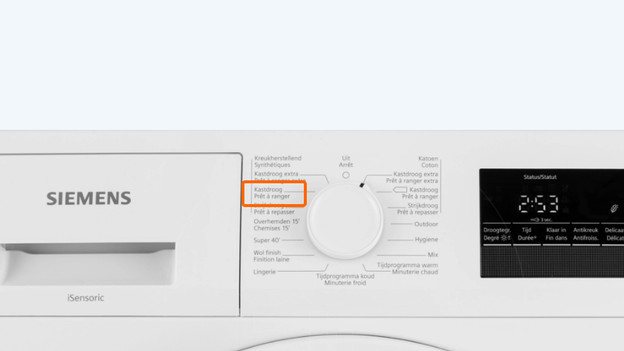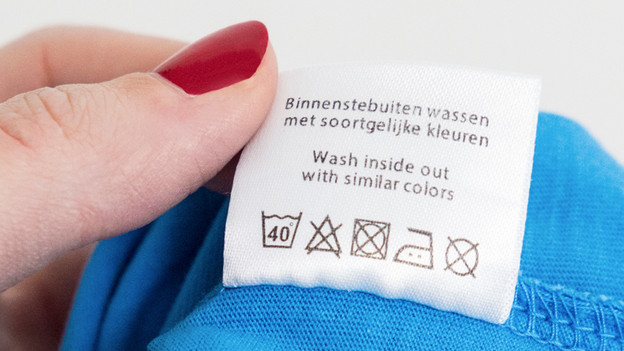
Written by Chiara
Edited on
27 January 2025
·
13:10
When do you use which dryness level on your dryer?
When you dry your laundry, you can choose between a couple of dryness levels. This determines how dry your laundry will be. The 4 most common dryness levels are iron dry, cupboard dry, cupboard dry plus, and extra dry. But what does each dryness level mean and for which laundry type do you use them? We'll explain that in this article.
Choose dryness level
When you wash your laundry, you can easily set a dryness level. The most common dryness levels of a dryer are:
- Iron dry: just before ironing
- Cupboard dry: for commonly-worn clothes
- Cupboard dry plus: really dry laundry
- Extra dry: for thick fabrics


Iron dry
Use the dryness level 'iron dry' when you iron your laundry just after ironing. With this setting, the laundry is still moist after drying. This makes it easier to iron. This function is useful for linen bedding or clothes. That way, you can prevent stubborn wrinkles from forming while it dries.

Cupboard dry
Do you put your clothes in the cupboard after drying? The 'cupboard dry' dryness level is the right setting. This dryness level makes sure your shirts are dry enough to store away. After drying, there's still a very tiny amount of moisture between the fibers of the fabric. This way, you cotton clothes won't shrink and the fibers last longer. Use this dryness level for your most common laundry, so they're not in the cupboard for too long.

Cupboard dry plus
The difference between cupboard dry and cupboard dry plus is that the laundry is really cry with cupboard dry. There's no moisture in the fabric at all, so you can put it in the cupboard for a long time. This dryness level is also useful if you want to put on your outfit right away after drying. This way, you don't have to walk in a damp T-shirt.

Extra dry
The dryness level 'extra dry' is useful for very thick fabrics. This can be a load of jeans or cotton towels. With this setting, all the residue moisture evaporates from the thick laundry. This way, you can be sure you use a dry towel after a shower. Don't use this setting for your clothes or underwear. There's a chance they shrink with this setting.

Choose dryness level
You can set the desired dryness level for you laundry in different ways. You can choose for iron dry or cupboard dry with the dial on your dryer. It's as easy to choose a specific cycle for your laundry. You can then set the dryness level separately with the button on the display. Press the button a couple of times until you select the right dryness level. You can check the manual of your dryer to see how to set the dryness level of your own dryer.

Check the laundry label
Also check the laundry label of your clothes. The symbols will say if you can put the laundry in the dryer and at which temperature:
- Dryer with a cross: don't put your laundry in the dryer.
- Dryer with 1 dot: dry your laundry at a low setting (iron dry).
- Dryer with 2 dots: dry your laundry at a regular or high settings (cupboard dry or extra dry).
